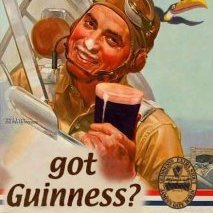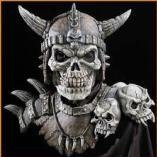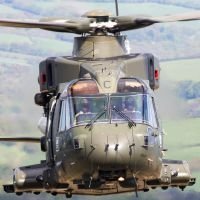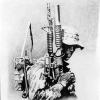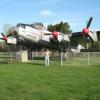Search the Community
Showing results for tags 'F4U-1'.
-
This Corsair came with me from the LHS last week. I also bought two Vallejo Model Color bottles (Dark Sea Blue and Intermediate Blue) so I can paint the aircraft as accurately as possible. Both paints were tested on a paint mule, and found out the paint applied over unprimed areas tended to lift if masked. That's why I'll be priming the entire model (something I don't usually do) in light grey, so I can then lay down the camouflage colours. The kit is of the raised panel line style, unsurprising since this model was released in the 1970s. It's been reboxed multiple times until 2013, the printing date of the kit's decals. There aren't a lot of parts, and some of them have a bit of flash, but nothing a sharp scalpel can't solve. I'm aiming to start on this one after December 22 of this year (hopefully). Edit: Startes the kit yesterday. I just couldn't resist.
- 26 replies
-
- 9
-

-
Hello guys, Which Vallejo Model Color paints would be needed for an F4U-1A Corsair (bubble top)? I'm looking for Model Color because they're water based, just like Revell Aqua. So far, these are the paint names and codes in Model Colour I've been able to find: 70951 Matt White, 70898 Dark Sea Blue, and 70903 American Blue. I'm not sure about 70903, it should be Intermediate Blue, but that one is only available as a Model Air colour (71299). Are these paints correct? P.D: I need Model Colour because I brush paint. Thanks!
-
The next Hobby Boss Corsair kit will be a 1/48th Vought F4U-1 Corsair late version - ref.80382 Release announced for late November 2015 in China. Source: http://www.hobbyboss.com/index.php?g=home&m=article&a=show&id=51&l=en V.P.
-
Sorry to miss the start of the party, but arriving fashionably late as always. Using Tamiyas 1/48 F4U-1/2 Birdcage I'm going to try and create a war weary, been around the bend hauling too many nuggets. She wont' be pretty but she will have style. The only extra will be Eduards P/E set and any stuff I can cram in with what I have sitting around. Hey, Modellers are like engineers, we love to change things. So here we go...
-
My dear Friends, this is my last lockdown work! It seems that I have to remain all this month closed at home, so my preferred hobby is the only thing I can do. This time I have just finished a Tamiya 1/48 scale F4U 1 Birdcage Corsair flown by the ace 2nd Lt. James N. Cupp during the Pacific Conflict. Previously this airplane was flown by 2nd Lt. Kenneth Walsh, another ace of this conflict, and was White 13, but was quickly repainted and assigned to Cupp as White 7. I tried to make it this Corsair really used, faded and battered as they were during the Pacific War and I tried some new, for me, scratching solutions. It partially worked, as I am moderately happy with the final result. Anyway this is the result: IMG_20200509_172634 by Franco Segato, su Flickr IMG_20200509_172449 by Franco Segato, su Flickr IMG_20200509_172511 by Franco Segato, su Flickr IMG_20200509_172525 by Franco Segato, su Flickr IMG_20200509_172704 by Franco Segato, su Flickr IMG_20200509_172758 by Franco Segato, su Flickr IMG_20200509_172844 by Franco Segato, su Flickr Thank you, and any suggestions are always welcomed.
- 11 replies
-
- 27
-

-
I'm certainly not the only one whose enthusiasm for the Chance Vought F4U is as old as his modelling obsession. This is my latest Corsair from four years ago. BuNo. 02350 arrived on Guadalcanal on 12 February 1943 with VMF-124, the first Marine Corsair squadron in the theatre. As Black (later White) 13 it was assigned to Lt Ken Walsh, who claimed some of the 6 victories of his first tour in this aircraft. 2/Lt Kenneth A. Walsh - VMF 124 1/Lt James N. Cupp - VMF 213 When VMF-124 stood down for R&R in April their Corsairs were handed over to VMF-213 and this combat-hardened fighter started a second life with Lt James N. Cupp. Christened 'Daphne C' after his wife it was now identified as White 7. The faithful Corsair helped Cupp record his first two victories before it was retired in July 1943 when fresh F4Us arrived. The Hobbycraft kit is a reasonably good product for a start. I followed my practice of using what's available in the aftermarket* plus some scratch-building of propeller, wheel wells and air intakes. The dihedral of the outer wing section is too shallow and was increased, and the span of the tail is a bit too short (the original one as well as the CMK option) which I considered negligible and did not correct. The most difficult operation was fixing the landing flaps in the down position. Finally I added a little gimmick by making the upper cowling removable to access the engine for maintenance. I hope my efforts match the performance of this outstanding fighter. Thanks for looking, Michael * After-market parts of this build: Eduard upgrade set, CMK cockpit floor, Eduard cockpit details, Vector engine, Vector cowling ring, CMK control surfaces, True Details wheels, Quickboost undercarriage covers, Squadron canopy REFERENCES CHANCE-VOUGHT F4U CORSAIR, AERO SERIES NO.11, EDWARD T. MALONEY / UWE FEIST, FALLBROOK, 1967 CORSAIR ACES – THE BENT-WING BIRD OVER THE PACIFIC, WALTER A. MUSCIANO, NEW YORK, 1979 F4U CORSAIR IN COLOR, FIGHTING COLORS NO.3, JIM SULLIVAN, CARROLLTON, 1981 F4U CORSAIR, FREDERICK A. JOHNSON, JANE'S, TOKYO, 1983 CORSAIR ACES OF WORLD WAR 2, OSPREY AIRCRAFT OF THE ACES 8, MARK STYLING, LONDON, 1995 CORSAIR 1940-1970 – 30 YEARS OF FILIBUSTERING, BRUNO PAUTIGNY, PARIS, 2003 INTERIOR COLORS OF US AIRCRAFT 1941-45, MARTIN WALIGORSKI, IPMS STOCKHOLM ORG, 2005 MODELLING THE F4U CORSAIR, OSPREY MODELLING 24, BRETT GREEN, BOTLEY, 2005 THE VOUGHT F4U CORSAIR – A COMPREHENSIVE GUIDE, MDF 18, RAFE MORRISSEY / JOE HEGEDUS, KINGSWAY, 2010 F4U CORSAIR WALK AROUND, DAVID DOYLE, CARROLLTON, 2011 VOUGHT F4U CORSAIR, WARPAINT SERIES NO.70, CHARLES STAFRACE, DENBIGH EAST
-
Dear All, So I have made a start on my latest model. I do this for fun/relaxation, not so good at it.....but getting better. Here is the pit/office all done..........................and yes, before anyone says anything, the interior green isn't correct.....but its what I had and is good enough for my humble needs. Enjoy........comments / suggestions (good or bad) welcome as they will only make my skills improve.
-
Chance Vought F4U-1 Corsair Hobbyboss 1:48 In February 1938 the U.S. Navy Bureau of Aeronautics published two requests for proposal for twin-engined and single-engined fighters. For the single-engined fighter the Navy requested the maximum obtainable speed, and a stalling speed not higher than 70 mph (110 km/h). A range of 1,000 miles (1,600 km) was specified. The fighter had to carry four guns, or three with increased ammunition. Provision had to be made for anti-aircraft bombs to be carried in the wing. These small bombs would, according to thinking in the 1930s, be dropped on enemy aircraft formations. In June 1938, the U.S. Navy signed a contract with Vought for a prototype bearing the factory designation V-166B, the XF4U-1, BuNo 1443. The Corsair design team was headed up by Rex Beisel. After mock-up inspection in February 1939, construction of the XF4U-1 powered by an XR-2800-4 prototype of the Pratt & Whitney Double Wasp twin-row, 18-cylinder radial engine, rated at 1,805 hp (1,346 kW) went ahead quickly, as the very first airframe ever designed from the start to have a Double Wasp engine fitted for flight. When the prototype was completed it had the biggest and most powerful engine, largest propeller and probably the largest wing on any naval fighter to date. The first flight of the XF4U-1 was made on 29 May 1940, with Lyman A. Bullard, Jr. at the controls. The maiden flight proceeded normally until a hurried landing was made when the elevator trim tabs failed because of flutter. Production F4U-1s featured several major modifications compared with the XF4U-1. A change of armament to six wing-mounted .50 in (12.7 mm) M2 Browning machine guns (three in each outer wing panel) and their ammunition (400 rounds for the inner pair, 375 rounds for the outer) meant that the location of the wing fuel tanks had to be changed. In order to keep the fuel tank close to the center of gravity, the only available position was in the forward fuselage, ahead of the cockpit. Accordingly, as a 237 gal (897 l) self-sealing fuel tank replaced the fuselage mounted armament, the cockpit had to be moved back by 32 in (810 mm) and the fuselage lengthened. In addition, 150 lb of armour plate was installed, along with a 1.5 in (38 mm) bullet-proof windscreen which was set internally, behind the curved Plexiglas windscreen. The canopy could be jettisoned in an emergency, and half-elliptical planform transparent panels, much like those of certain models of the Curtiss P-40, were inset into the sides of the fuselage's turtledeck structure behind the pilot's headrest, providing the pilot with a limited rear view over his shoulders. A rectangular Plexiglas panel was inset into the lower center section to allow the pilot to see directly beneath the aircraft and assist with deck landings. The engine used was the more powerful R-2800-8 (B series) Double Wasp which produced 2,000 hp (1,491 kW). On the wings the flaps were changed to a NACA slotted type and the ailerons were increased in span to increase the roll rate, with a consequent reduction in flap span. IFF transponder equipment was fitted in the rear fuselage. These changes increased the Corsair's weight by several hundred pounds. The performance of the Corsair was impressive. The F4U-1 was considerably faster than the Grumman F6F Hellcat and only 13 mph (21 km/h) slower than the Republic P-47 Thunderbolt; all three were powered by the R-2800. But while the P-47 achieved its highest speed at 30,020 feet (9,150 m) with the help of an intercooled turbocharger, the F4U-1 reached its maximum speed at 19,900 ft (6,100 m), and used a mechanically supercharged engine. The Model Continuing their release schedule with the different variants of F4U Corsairs, Hobbyboss have now released the F4U-1. The top opening box has a nice artistic impression of the aircraft in flight whilst inside there are seven sprues of medium grey styrene, two separately moulded parts, one sprue of clear styrene and a decal sheet. All the parts are very nicely moulded with fine panel lines and rivet detail throughout. There’s no sign of flash or other imperfections and only a few moulding pips, but what there are, are on some of the finer parts, so care will need to be taken when removing them and cleaning up. Fortunately the wing problems that have plagued the previous release are actually correct for this version. As with most of their aircraft kits, should go together fairly easily. It’s not a complicated build, but there are areas that have quite a bit of detail, particularly the engine, where the parts are quite fragile and fiddly. Naturally as with most aircraft builds, construction begins with the cockpit, and the fitting of the two side consoles and two piece seat assembly to the rear bulkhead. The rudder pedals are glued to the front bulkhead, to which the instrument panel bulkhead is attached, followed by the instrument panel for which a decal is provided, even though the IP has dimples where the instruments are mounted, a good panel to use those Airscale instruments and bezels you’ve promised to use one day. The joystick complete with control wires glued through the instrument panel bulkhead and into the front bulkhead. As per the real aircraft, there isn’t a cockpit floor, so side consoles, now attached to the rear bulkhead are then glued to the instrument panel bulkhead forming the cockpit “tub”. The engine is a model on its own, with the two cylinder banks moulded as single items which are then joined together and fitted with the single piece inlet manifold complete with the myriad of pipes. The exhausts are next and care should be taken to get the right parts in the right place as it’s crucial to get them exhausting out of the right places. The two piece crank case is fitted with the two magnetos and with the propshaft pushed through it from behind, glued to the front of the engine along with the pushrod ring. The accessory gear box is made up form three parts and glued to the rear of the engine. The wings are designed such that the modeller has a choice of whether to pose them folded or spread. The choice is pretty much made with the assembly of the wing centre section which includes the lower fuselage and gull wing sections. The two radiator baths are glued to the single piece bottom wing section along with the folding point ribs, before the two upper wing sections are attached. The leading radiator intakes are then fitted with their grilles before being glued onto the wing. The fold points are detailed with three piece fold mechanisms and two piece spars. When posing the wings extended you won’t need to add the mechanisms and you use the straight spar part instead to the bent part. Unfortunately the flaps, although separate have been moulded in such a way that they cannot be posed drooped, although I’m sure with a bit of modelling it can be done should you wish. On the centreline there is a large cooling vent fitted, with the accelerator sling hooks fitted on either side, and the clear panel to the rear. The seven piece tailwheel/hook assembly is now built up and along with the tail hook has the option of being built extended or lowered, do ensure that the correct parts are used for the option you wish to build. The tailwheel, cockpit, and engine assemblies are now fitted to one half of the fuselage, along with the cockpit sidewalls and tailwheel bay structure, which is made up from five parts. The fuselage is then closed up and the centre wing assembly glued into position, as is the engine cowl flap section and cowling. Just behind the cockpit, on either side, two panels are attached, whilst in the cockpit the two part gun sight is fitted. The horizontal tailplanes are each single piece parts, to which the elevators and control rods are fitted. Unlike the previous releases, this kit comes with open machine gun bays, but with the three 50 cals with separate ejector guides and with their associated belt trays, with separate belts included. All the gun bay doors are also separate, and look like they could be a bit awkward to fit in the closed position even though there are nice ledges for them to sit. The outer wings can now be fitted to the inner wings and in whatever position you have chosen. The main undercarriage assemblies are now built up. Each assembly consists of the main oleo, scissor link, retraction actuator legs front mounted door and two piece wheels. The completed undercarriage assemblies are then fitted into their respective bays along with the main and tailwheel bay doors. The single piece three bladed propeller, propeller hub, windscreen, canopy, two aerial masts and spine mounted anti-collision light are attached. Decals There two aircraft options provided on the decal sheet which are well printed, in register and with good opacity. Along with the national markings and individual codes, there are a small selection of stencils for one aircraft, as well as the yellow tips for the propeller blades, for those modellers who don’t like to paint this area. The two aircraft options are 17-F-6 and 17-F-25, both in a two tone Blue Grey over Light Gull Grey scheme, at least that’s what’s on the colour callouts. Conclusion Well, what can I say here that I haven’t already said in the review? It’s a great looking model, which will probably be a nice quick and fairly pain free build. It’s nice to see Hobbyboss adding the armament to this version; perhaps they do read reviews and comments? Highly recommended. Review sample courtesy of
-
Morning all, Sneaking over the line just before new year are my final two completions, the Airfix Wildcat and Tamiya Corsair. Both in 1/72 and completely out of the box. Two very neat little kits. Thanks for looking, comments welcomed Happy new year Shaun
- 17 replies
-
- 41
-

-
F4U-1Corsair Cockpit Set Brassin 1:32 Cockpit Set (632039) Having reviewed a fair number of add-on sets from Eduard for he Tamiya 1:32 Corsair I thought they had done everything possible, but it turned out I was wrong, especially when this set arrived from them. The set is packaged in a pretty sturdy top opening cardboard box, inside of which are an amazing number of parts, including both resin and etched brass, surrounded by foam padding for complete protection. The larger than normal instruction sheet provides some of the clearest diagrams I’ve seen from Eduard/Brassin which will help greatly in getting the most out of this set. There are forty seven resin parts in a mixture of medium and dark greys, plus two clear resin parts, a sheet of pre-painted etched brass. The detail on the resin parts is nice and sharp, with good depth, although some parts have small sections of flash which need to be removed on top of the removal from the casting blocks. The cockpit is literally a tub made up of the front and rear bulkheads, what would be the fuselage side walls and the lower fuselage interior, which has the lower windows in the need of flash removal. The kits interior rib detail needs to be completely removed to allow the fitment of the tub, which shouldn’t take too long with a nice sharp curved blade and some sanding sponges. The moulded detail on the bulkheads and inner fuselage parts needs to be seen to be believed, add to this all the smaller sundry parts and you will have a truly amazing cockpit. Yet the modeller will still need to add their own small wire parts for which the dimensions and shape are provided in the instructions. When it comes to the instrument panel, Eduard have included both a full resin item as well as one that is made up of an etched sandwich, between which a decal is attached, whichever takes you fancy. Presonally I would use the etched one, but fit it out with Airscale decal instruments and some Clear Glaze. The resin is further enhanced with the addition of the two etched brass sheets, one of which contains the pre-painted seat belts which are quite complex, but with care and attention will build into a pretty amazing representation of the real things. Also included on the etched sheet are a number of levers, but the majority of these are taken from the kit, as even Eduard appear to realise they couldn’t improve on them. Conclusion The Tamiya F-4U Corsair is already an outstanding kit with very few problems or vices that haven’t already been fixed by other aftermarket companies. The kit already has a very nicely detailed cockpit so I do wonder whether this set will sell that well, but I’d imagine Eduard have thought of that. The level of detail and the superb moulding is really quite amazing, and with some careful painting and weathering it will look amazing. So, if you absolutely have to have every aftermarket release for your build then you will need this one. Highly recommended Review samples courtesy of
-
Hi All This is my go at Tamiya's big Corsair. The main body colour is UA038 LifeColour, the rest of the paint work is Tamiya. These 1/32 series kits go together perfectly, leaving more time to play with the paint job! Hope you like it!
- 30 replies
-
- 19
-

-
Build 7 Although I've already got a list of kits to build for this group I keep buying more models to build for it! This one is going to be hacked to bits and converted into a custom racer, with a longer cowling, tiny bubble canopy, clipped wings etc. I'm building it "in flight" because racers just look better that way Price: £1.99 from Antics Wow! I've not seen that much flash since this came out... Although I'm not using it, I thought I'd put a photo of the canopy up to show the kind of quality you get. You'd never guess that "thing" was for Corsair
-
G'Day Britmodellers, I just joined a couple of weeks ago and this is my first thread. Aviation has been a very important part of my life, and a source of motivation not for this beautiful hobby but for other daily activities as well. I love WWII warbirds, post war jets, and every flying machine out there captures my attention in a very special way. I love visiting museums as well, and soon in October I’ll be visiting the USAF National Museum in Dayton Ohio. This museum has been a dream since I was a kid, when I knew of its existence when my father bought a subscription of the National Geographic Magazine. I’ll spend 3 days visiting so I can capture as much details as I can, I expect to share this visit with you. When I was a kid I probably built a dozen of 1/72 Matchbox F4U Corsair and Zero fighters, those that came with a clear stand with a flexible joint so the kit could be displayed in different flight attitudes. I built them without putting much care into details, with too much glue, fingerprints everywhere, landing gear misaligned, missing decals, etc. I just wanted to have them built as fast as I could, maybe in an hour or so and play with them. After some nostalgic memories of the good old days, today I’ll share with you a 1/48 Tamiya bent wing F4U-1 Corsair Birdcage Item 61046. I just got the brand new 1/32nd and I expect to upload the building process soon, I can’t wait to start digging in that big box, built it and start doing what I like the most, painting, weathering and finishing. I couldn’t close my jaws for a while after opening the box. The level of detail of the aerodynamic surfaces is just amazing, and I can foresee endless possibilities when painting, weathering and finishing. Going back to the 1/48th Birdcage, source of information, is the well known series of books Aircraft of the Aces - 8 “Corsair Aces of the World War 2” by Mark Styling from Osprey Publishing. This is an excellent source of information. Although with black & white pictures, they give a very good source for painting and weathering, providing several pictures with maintenance crew working on the ship while on the flight line. The built is OOB with the exception of the Eduard photo etched interior set EU4103 and the True Details resin wheels. The subject is the F4U-1 white 20 of the 1st Lt Foy R ”Poncho” Garison VMF-213 in Guadalcanal July 1943. Referenced in page 17 of the Osprey book. He shot down 2 zeros on 30 June 1943. The book isn’t showing a picture of the port fuselage then there is no proof of those marks assigning both victories to this ship. So trusting on my best guess I’ll put those two Japanese flags underneath the windscreen. I wanted to try Xtracrilix paints for the first time. I used FS15164 intermediate blue, FS17875 White for the upper surfaces. As a personal choice, the Tamiya XF-12 JN Grey for the lower surfaces. I missed the details of the cockpit construction, next one willbe fully detailed. Hope you will enjoy it: Pre-shading: First layer FS15164 Intermediate blue. Lower surfaces masked with blue tack. Some post-shading and faded panels to provide contrastand depth. Oil wash panel lines Now some pastels for the exhaust stains, more streaking different tones and shades, with my airbrush, before glossy sealing with Pledge floor wax. Stay tunned. Cheers!
-
Here’s my version of Tamiya’s 1/48 F4U-1 ‘birdcage’ Corsair, finished in the nondescript markings of a Marine squadron based in the Solomon Islands in 1943. This build was almost straight ‘out-of-the-box’ – the only things added were seat belts, a rearview mirror, and some brake lines to the main gear. These kits are real treats to build – if you are careful, you won’t have to fill a single seam. I realize a Marine Corsair based in the Solomons would be probably not have the wings folded, but I really like the look of a plane with dropped flaps, folded wings, open canopy, etc. I also kept weathering to a minimum, mainly because I don’t know how to portray a heavily weathered effect properly. These Tamiya Corsairs are arguably the best in 1/48 scale - I just wish they’d do a -4 version…



